- What is breast and nipple thrush?
- Statistics of breast and nipple thrush
- Risk factors for breast and nipple thrush
- Progression of breast and nipple thrush
- Symptoms of breast and nipple thrush
- Clinical examination of breast and nipple thrush
- How is breast and nipple thrush diagnosed?
- Prognosis of breast and nipple thrush
- Treatment of breast and nipple thrush
- Breast and nipple thrush prevention
- References
What is breast and nipple thrush?
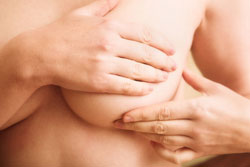
Statistics of breast and nipple thrush
Breast pain is a common problem immediately after starting to breastfeed. About 80% of breastfeeding mothers will experience breast pain after delivery, and 90% of them will experience breast pain in the first week after delivery. However, these statistics represent breast pain in general, with thrush as just one of the causes of breast pain. Specific statistics regarding the incidence of breast and nipple thrush is still lacking.
Breast and nipple thrush in breastfeeding mothers is commonly associated with oral thrush in their newborn infants, since about one in four infants (24%) will develop oral thrush before reaching 18 months of age. However, oral thrush in newborn babies can also occur as a result of infection of their oral cavity as they pass through the birth canal during delivery, if the mother was having vaginal thrush. Almost one in four pregnant mothers will experience vaginal thrush near delivery.
Risk factors for breast and nipple thrush
Candida,or thrush, can reside in and is capable of colonising and infecting most parts of the body. Generally the organism lives in harmony with the human body, but it can cause infection when imbalances occur.
Most typically it infects superficial lesions of the skin and mucous membranes, particularly in the vagina and The corium and submucosa.Thrushdoes not usually colonise healthy glabrous skin (hairless external skin) such as the skin of the nipple. However, during lactation, the breast and nipple are more vulnerable to thrush, particularly if there is:
- Nipple damage in early breastfeeding;
- Use of antibiotics in pregnancy or immediately after delivery;
- Previous long-term antibiotic use;
- Previous vaginal thrush infection;
- Use of breast pads, which create a moist environment around the nipple and allow yeast to multiply;
- Fatigue and/or exhaustion;
- Poor diet; or
- Chronic illness, including HIV, diabetes or anaemia.
Progression of breast and nipple thrush
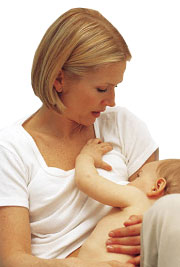
Yeast readily colonises the linings of the vagina, mouth and oesophagus, but does not invade intact skin, as it prefers and multiplies most rapidly in warm and moist environments. It can, however, colonise damaged skin.
Damage to the skin of the nipple occurs commonly during breastfeeding, especially when there is poor latching and positioning of the baby during feeding. This injury, together with a persistently moist environment caused by leaking milk and the use of breast pads, predisposes the nipple to thrush.
On entering the skin, the yeast produces some enzymes and proteins that cause more destruction of surrounding tissue and allow for further invasion and inflammation, causing the pain and redness seen in breastfeeding mothers.
Symptoms of breast and nipple thrush
The main symptom of breast and nipple thrush is severe burning pain, often deep in the breast, that may be associated with stabbing pain and pain radiating throughout the breast. Breast pain due to thrush can be differentiated from breast pain caused by a bacterial infection. Breast pain caused by a bacterial infection is a deep, dull aching pain that is associated with fever, body ache, breast inflammation and other generalised symptoms.
Breast pain due to thrush usually occurs in both breasts, but may occur in only one breast or nipple. It is usually experienced immediately after breastfeeding or after expressing milk. A sudden increase in pain may suggest bacterial super-infection.
Tell your doctor if you have been using antibiotics during or after pregnancy. This will help them make the correct diagnosis.
Other symptoms that may be experienced by a lactating woman with breast and nipple thrush include:
- Acute nipple pain, which often worsens when showering;
- Extreme tenderness of the nipple, to the extent that even touch by light clothing can induce pain;
- Itchy breasts;
- Breast rash;
- Diminishing milk supply.
None of these symptoms are specific for thrush. They are also common features of bacterial mastitis, physical breast trauma from poor latching and/or positioning, or even skin conditions such as eczema or psoriasis.
Oral thrush in the infant’s mouth may signal breast or nipple infection in the mother that may require treatment. Presence of the following symptoms in the infant should alert the mother and her practitioner to the possibility of breast and nipple thrush:
- Reluctant infant feeding, for example the infant pulling back or arching away from the breast during feeding;
- Excessive infant tongue thrusting; and
- Short and erratic feeds.
Clinical examination of breast and nipple thrush
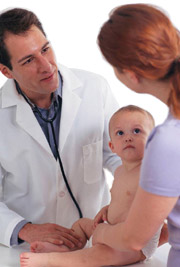
Examination of the mother
Initial examination of the lactating woman will include a complete evaluation of the breast. The findings in the mother may vary considerably, and affected breasts may even appear normal. The following findings indicate that you may be suffering from breast and nipple thrush:
- Your nipple has red or purple discolouration;
- Your breast has a diffuse pink discolouration;
- There are striae radiating from the nipple;
- The skin on the nipple is shiny or flaky.
Nipple tenderness but not breast tenderness is a feature of thrush. Breast tenderness is a feature of bacterial infection. Your practitioner may also need to exclude other conditions during examination, such as Raynaud’s disease.
Examination of the baby
Your baby will also need to be examined to exclude the presence of thrush commonly affecting the oral cavity and diaper area. The main physical finding of oral thrush in the breastfed infant is white patches on the surfaces of the mouth and tongue. In the diaper area, a red diaper rash with satellite lesions may also be seen.
Oral thrush in the infant can also often be asymptomatic. In these cases, the baby’s feeding behaviours can indicate the baby may have oral thrush:
- Excessive tongue thrashing; and
- Fussy feeding and rejection of the breast.
Get on top of your general health
Find and instantly book affordable GPs within Australia
How is breast and nipple thrush diagnosed?
Breast and nipple thrush is diagnosed primarily from the mother’s symptoms and the doctor’s findings on clinical examination. Your doctor may request some general laboratory tests to rule out other causes such as bacterial infections. These include taking body temperature and requesting a full blood count. An elevated temperature (> 38.5oC) and raised white blood cell count is suggestive of bacterial infection rather than thrush.
Your doctor may also want to assess your latching technique during breastfeeding before initiating treatment.
Microbiological examination of the nipple/areola skin as well as of the milk can be done. However, as these tests may take longer than three days to receive the results, your doctor may start you on treatment before receiving the results if you are experiencing severe pain and are at risk of stopping breastfeeding early.
Prognosis of breast and nipple thrush
Breast and nipple thrush respond well to anti-fungal treatment. In the majority of cases, pain is minimal by day four of treatment, and breastfeeding is pain free by completion of the 14-day treatment regimen.
Treatment of breast and nipple thrush
When your doctor diagnoses you with breast and nipple thrush or your baby with oral thrush, both you and your baby will need treatment, even if one of you is not experiencing any symptoms.
Following your doctor’s instructions properly is important, as non-compliance can delay treatment, healing and make breastfeeding more difficult.
Treatment of the mother
Topical anti-fungal agents
The mother is treated by applying anti-fungal cream to the nipples after every feed. Your doctor may recommend:
- Miconazole 2 mg/g (Daktarin oral gel), which is also suitable for oral use and does not need to be wiped from the nipples before the next feed;
- Nyastatin cream/gel (Nilstat), which is available in oral forms for mother and baby, or topical forms to be applied to the nipples after feeding; or
- Bifonazole cream (Canesten), which is NOT suitable for oral use and must be wiped off before the next feed.
Topical treatment usually lasts for 14 days.
Oral anti-fungal agents
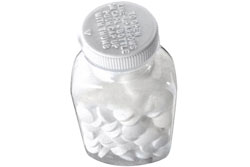
In some cases, a full course of oral fluconazole (Diflucan) (once every second day for three days) is also necessary. This is likely where you experience:
- History of persistent candidiasis;
- Deep aching breast pain;
- Symptoms persisting after treatment with topical anti-fungals and oral nyastatin, in which case a second course of oral nyastatin (for 1–2 weeks) may also be used;
- Laboratory evidence of C. albicans infection in breast milk.
If symptoms persist, a second course of fluconazole 150 mg capsules may be prescribed as one capsule every second day for three days. The drug is also available on prescription as a daily regimen for 10 days.
Women should take note that most oral medications, and fluconazole in particular, cross into the breastmilk. While fluconazole is available over the counter in Australia, lactating women should only take the drug if advised to do so by their doctor.
Pain relief
When breast pain is severe, your doctor may also prescribe painkillers such as paracetamol or ibuprofen.
Interventions to enable continued breastfeeding
Breast and nipple thrush may interrupt breastfeeding patterns and, in severe cases, may cause women to cease breastfeeding early. Breastmilk provides the optimal nutrition for your infant, and women may become depressed or experience feelings of inadequacy if they stop breastfeeding early. Your doctor may refer you to appropriate health professionals for breastfeeding support while you continue with treatment for thrush.
Associated breast care and lifestyle measures
Women with breast and nipple thrush are also advised to take the following measures:
- Ensure the infant is properly positioned and latches onto the breast in a manner that minimises the likelihood of trauma and injury to the nipple. Education from a healthcare professional about proper infant positioning and latch on techniques for breastfeeding are very useful;
- Get all members of the family treated for fungal infection occurring at any site (e.g. vaginal candidiasis, nappy rash, fungal infection of the foot);
- Keep the nipples dry. Ideally, breast pads should not be used. If breast pads are used, cloth pads should be avoided. Disposable pads should be changed frequently, as pads that have absorbed milk create a moist and warm environment for yeast growth;
- Rinse the nipples with warm water after each feed. Pat dry with a clean towel and then dry thoroughly with a hair dryer (low setting);
- Rinse nipples with a solution of sodium bicarbonate (1 teaspoon) diluted in water (1 cup), once or twice a day;
- Expose the breasts to sunlight for 15 minutes each day;
- Ensure teats and dummies for the infant’s bottle are thoroughly washed after every use by boiling for 5 minutes. Anti-bacterial sanitising agents may not effectively destroy yeast organisms like C. albicans. The use of dummies may also contribute to yeast infections and should be avoided where possible. Ideally teats and dummies should be replaced on a weekly basis.
- Ensure good hand hygiene: Wash hands thoroughly after nappy changes, before and after applying any creams/lotions, and at any other time when they may become dirty (e.g. after preparing food or touching garbage);
- Ensure clothing and materials that will come into contact with the breast (e.g. towels, bras) are washed in hot soapy water and air dried outside. Cotton bras are recommended;
- Eat a healthy, well balanced diet. Avoid foods that may exacerbate yeast infection, including alcohol, dried fruits and peanuts, cantaloupe, grapes, refined sugars and vegemite.
Follow-up care
Your doctor will need to see you to assess your response to treatment one week after its initiation. In cases where pain is reducing, the medication regimen will be continued, but if pain symptoms persist or worsen, fluconazole 150 mg may be added to the regimen (if not already included), followed by another course of oral nystatin. Oral ketoconazole may also be instituted if the breast pain does not respond to fluconazole.
If standard treatment fails to resolve your symptoms, your doctor may ask you to apply gentian violet aqueous paint (an anti-fungal and anti-bacterial agent specially prepared in some pharmacies) to the nipples twice daily for seven days.
If symptoms persist for 2–3 weeks following these treatments, then bacterial infection is possible. Further investigations will be conducted, which may include a laboratory assessment of breastmilk.
Treatment of the infant
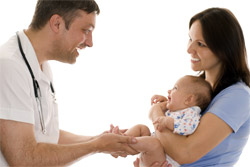
If your baby has symptoms, they may be prescribed anti-fungal treatment for the oral cavity. Agents that may be used include:
- Nystatin (Nilstat oral drops) applied topically to the oral cavity after every feed. Duration of treatment is typically fourteen days;
- Miconazole 2 mg/g (Daktarin oral gel) applied four times daily for one week and daily thereafter for a further week after symptoms disappear.
The duration of treatment may vary, but usually continues for one week after the resolution of symptoms.
Your baby may also require topical treatment for nappy rash and fungal infections of the genitals and anus.
Treatment will be successful only if the gel is administered as recommended and for a sufficient amount of time to completely eliminate the infection. Proper adherence to treatment as advised by your doctor requires you to be diligent and consistent.
Mothers need to learn the correct application of gels to prevent infant choking, particularly in babies less than 6 months of age. A teaspoon should NOT be used to apply the gel. The gel should be applied using a finger. Small quantities should be rubbed into the gums, cheeks and tongue until the recommended dose has been applied. Mothers should wash their hands thoroughly before applying the gel.
Infant feeding during treatment
Women experiencing severe breast pain who are having difficulty breastfeeding their infant are advised to express their breast milk.
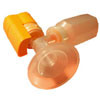 |
For more information, see Expressing Breastmilk. |
More Information
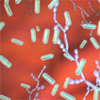 |
For more information on thrush, including common symptoms, treatment options and some useful videos, see Thrush (Candidiasis). |
Breast and nipple thrush prevention
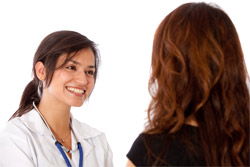
Antibiotic use
Your doctor will prescribe antibiotics only when absolutely necessary. In cases where antibiotics are required, thrush risk may be reduced by:
- Using antibiotics for the shortest possible period of time; and
- Using anti-fungal nipple cream preventatively. This is important if you have a history of yeast infection and are receiving antibiotics during breastfeeding.
Breastfeeding practices
Good breastfeeding practice can also reduce your risk of thrush:
- Attend breastfeeding classes before delivery;
- Seek early training on proper latching technique;
- See your doctor promptly if the nipple becomes cracked or otherwise damaged;
- Avoid disposable breast pads, which can abrade and occlude the nipple. Wearing disposable breast pads also creates a warm environment near the nipple, providing ideal conditions for yeast to multiply.
Other measures
Steps you can take to help prevent breast and nipple candidiasis during breastfeeding include:
- See a doctor if nipple pain is experienced after feeding;
- Report symptoms of vaginal thrush or other yeast infections to your doctor;
- Reduce dietary sugar (if you are prone to getting yeast infections); and
- Avoid nipple infection from the vagina through good hand hygiene.
References
- Breast and nipple thrush [online]. Parkville, VIC: The Royal Women’s Hospital; January 2008 [cited 31 March 2011]. Available from: URL link
- Brent N, Rudy SJ, Redd B, et al. Sore nipples in breast-feeding women: A clinical trial of wound dressings vs conventional care. Arch Pediatr Adolesc Med. 1998;152(11):1077-82. [Abstract | Full text]
- Sayyah Melli M, Rashidi MR, Delazar A, et al. Effect of peppermint water on prevention of nipple cracks in lactating primiparous women: A randomized controlled trial. Int Breastfeed J. 2007;19:2-7. [Abstract | Full text]
- Heinig MJ, Francis J, Pappagianis D. Mammary candidiasis in lactating women. J Hum Lact. 1999;15(4):281-8. [Abstract]
- Brent NB. Thrush in the breastfeeding dyad: Results of a survey on diagnosis and treatment. Clin Pediatr (Phila). 2001;40(9):503-6. [Abstract]
- MacDonald H. Candida: The hidden deterrent to breastfeeding. Can Nurse. 1995;91(9):27-30. [Abstract]
- Morland-Schultz K, Hill PD. Prevention of and therapies for nipple pain: A systematic review. J Obstet Gynecol Neonatal Nurs. 2005;34(4):428-37. [Abstract]
- Tanguay KE, McBean MR, Jain E. Nipple candidiasis among breastfeeding mothers. Case-control study of predisposing factors. Can Fam Phys. 1994;40:1407-13. [Abstract | Full text]
- Amir LH. Candida and the lactating breast: Predisposing factors. J Hum Lact. 1991;7(4):177-81. [Abstract]
- Francis-Morrill, J. Heinig JM, Pappagianis D, Dewey KG. Diagnostic value of signs and symptoms of mammary candidosis among lactating women. J Hum Lact. 2004;20(3):288-95. [Abstract]
- Green H. Breastfeeding guidance for general practice [online]. North Mackay, QLD: Mackay Division of General Practice; 30 March 2009 [cited 31 March 2011]. Available from: URL link
- Eglash A, Plane MB, Mundt M. History, physical and laboratory findings, and clinical outcomes of lactating women treated with antibiotics for chronic breast and/or nipple pain. J Hum Lact.2006.22(4):429-33. [Abstract]
- Graves S, Wright W, Harman R, Bailey S. Painful nipples in nursing mothers: Fungal or staphylococcal? A preliminary study. Aust Fam Physician. 2003;32(7):570-1. [Abstract | Full text]
- Hoover K. Breast pain during lactation that resolved with fluconazole: Two case studies. J Hum Lact. 1999;15(2):98-9. [Abstract]
- Breastfeeding challenges. Chapter 8.2: Clinical guidelines. Section B: Midwifery and gynaecology [online]. King Edward Memorial Hospital Women’s Health Service; November 2008 [cited 31 March 2011]. Available from: URL link
- How common medications can affect your breast milk [online]. Parkville, VIC: The Royal Women’s Hospital; April 2008 [cited 31 March 2011]. Available from: URL link
- Riordan J. Breastfeeding and human lactation (3rd edition). London: Jones and Bartlett Publishers; 2005. [Book]
- Your guide to breastfeeding [online]. Washington, DC: US Department of Health and Human Services, Office on Women’s Health; January 2011 [cited 6 April 2011]. Available from: URL link
- Thrush in lactation [online]. Parkville, VIC: The Royal Women’s Hospital; 2006 [cited 31 March 2011]. Available from: URL link
Drugs/Products Used in the Treatment of This Disease
All content and media on the HealthEngine Blog is created and published online for informational purposes only. It is not intended to be a substitute for professional medical advice and should not be relied on as health or personal advice. Always seek the guidance of your doctor or other qualified health professional with any questions you may have regarding your health or a medical condition. Never disregard the advice of a medical professional, or delay in seeking it because of something you have read on this Website. If you think you may have a medical emergency, call your doctor, go to the nearest hospital emergency department, or call the emergency services immediately.







